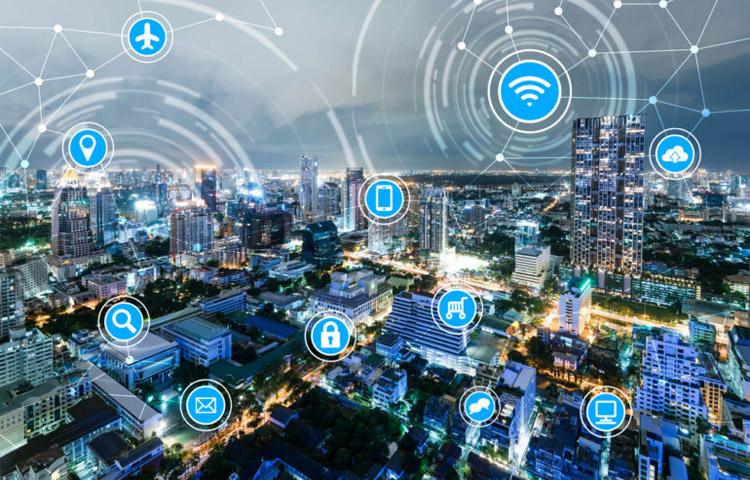
Smart cities are cities built on ‘Smart’ and ‘Intelligent’ solutions and technology that will lead to the adoption of at least 5 of the 8 following smart parameters—smart energy, smart building, smart mobility, smart healthcare, smart infrastructure, smart technology, smart governance and smart education, smart citizen Smart Governance and Smart Education Smart Citizen Smart Healthcare Smart Building Smart Energy 4G Smart Mobility Smart Technology Smart Infrastructure Note: Smart Security is included as a part of Smart Infrastructure segment in this illustration.
Streetlights are among a city’s strategic assets: providing safe roads, inviting public areas, and enhanced security in homes, businesses, and city centers. However they’re usually very costly to operate, and they use in average 40% of a city’s electricity spending. As the cost of electricity continues to rise and as wasting energy is a growing concern for public and authorities, it’s becoming crucial that municipalities, highway companies and other streetlight owners deploy control systems to dim the lights at the right light level at the right time, to automatically identify lamp and electrical failures and enable real time control. Cities that create such controlled streetlight networks can not only save up to 50% on energy and drastically enhance the maintenance service and safety in the street, but also leverage the streetlight grid as the backbone of other smart city applications.
The cost of operating a streetlight network the cost of operating a streetlight network is usually split into: Electricity costs: table 1 provides the average price· of electricity per kWh for citizens in the European countries and in China. The streetlight network is a city’s primary consumer of electricity, representing 40% of a city’s electricity spending. Maintenance costs: night patrols to visually identify failed lamps, replacing failed lamps, cleaning optics and maintaining the integrity and security on the electrical grid require crews of streetlight specialists and service trucks. More than 80% of the streetlights are equipped with high pressure sodium lamps with a lifetime under 3, 5 years, i.e. 14.000 burning hours.

The Challenges for cities
One challenge facing cities involves increasing their attractiveness for companies and people, in a fast changing world. Providing a safe and secure environment, developing innovative services to citizens, contributing to a greener city and enhancing budget efficiency are amongst key priorities for many cities.
As demonstrated by market studies (e.g. McKinsey – Lighting the way: perspectives on the global lighting market), more and more cities understand that their streetlight network may play a strategic role in helping them overcome these challenges, particularly to: Increase street safety: reduced lamp downtime and enhanced street
Visibility is directly linked to driver and pedestrian safety and comfort.
Studies show how improved street lighting reduces crime and improve
The feeling of being in a secured place. Improve maintenance processes: automatic lamp and electrical failure identification, monitoring streetlight cabinet and light points contribute to maintenance budget reductions, while improving lighting service quality.
Reduce energy consumption and communicate on associated CO2 savings
1) By deploying more energy efficient dimmable HPS and LED luminaries’ and
2) By dynamically adapt light levels, controlling and monitoring streetlight and streetlight switching cabinets.
The rising price of electricity is, by itself, responsible for the majority of the increase in streetlight operation budgets. It’s now becoming strategic and compelling for cities to implement solutions to measure, analyze and reduce electricity use, decrease maintenance costs, challenge their energy providers and contribute to the reduction of CO² emissions, as required by the Kyoto Protocol.

